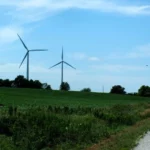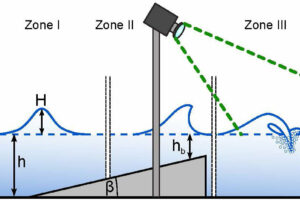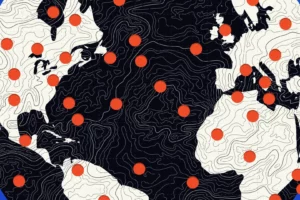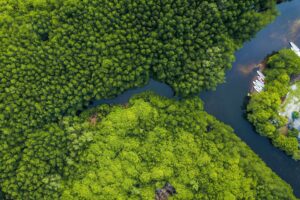A shifting glacier is redrawing the border between Italy and Switzerland in the Alps.
Rising temperatures are melting the Theodul Glacier and the fall-out, being felt in an alpine refuge lodge, could have political implications for both nations.
Traditionally, the Swiss-Italian border in the Alps has been decided by the watershed, which marks the point at which meltwater flows down towards one nation or the other.
But the retreat of the glacier means the watershed has crept towards the Rifugio Guide del Cervino, a refuge for visitors near the 3,480-metre Testa Grigia peak — and it is gradually sweeping underneath the building.
Inside the refuge the menu is in Italian, not German, and priced in euros rather than Swiss francs — for now.
When the refuge was built on a rocky outcrop in 1984, its 40 beds and long wooden tables were entirely in Italian territory.
But now, two thirds of the lodge, including most of the beds and the restaurant, is technically perched in southern Switzerland.
The issue has come to the fore because the area, which relies on tourism, is located at the top of one of the world’s largest ski resorts, with a major new development including a cable car station being constructed a few metres away.
Diplomatic negotiations on the border began in 2018 and concluded with a compromise last year — but the details are mostly secret.
:quality(70)/cloudfront-eu-central-1.images.arcpublishing.com/thenational/IRWQ7KTNANAH3N53UPZM4ADSYU.png)
“We agreed to split the difference,” said Alain Wicht, chief border official at Switzerland’s national mapping agency Swisstopo.
His job includes looking after the 7,000 boundary markers along Switzerland’s 1,935-kilometre border with Austria, France, Germany, Italy and Liechtenstein.
Mr Wicht attended the negotiations, where both parties made concessions to find a solution. “Even if neither side came out winners, at least nobody lost,” he said.
The Theodul Glacier lost almost a quarter of its mass between 1973 and 2010. That exposed the rock underneath to the ice, altering the drainage divide and forcing the two neighbours to redraw around a 100-metre stretch of their border.
Mr Wicht said that such adjustments were frequent and generally settled by comparing readings by surveyors from the border countries, without getting politicians involved.
“We are squabbling over territory that isn’t worth much,” he said. But he also said that this “is the only place where we suddenly had a building involved”, giving “economic value” to the land.
His Italian counterparts declined to comment “due to the complex international situation”.
While the outcome is secret, the refuge’s caretaker, 51-year-old Lucio Trucco, has been told it will stay on Italian soil.
“The refuge remains Italian because we have always been Italian,” he said. “The menu is Italian, the wine is Italian, and the taxes are Italian.”
For now, on Swisstopo’s maps, the solid pink band of the Swiss border is still a dashed line as it passes the refuge.
Source : The National News











Add Comment